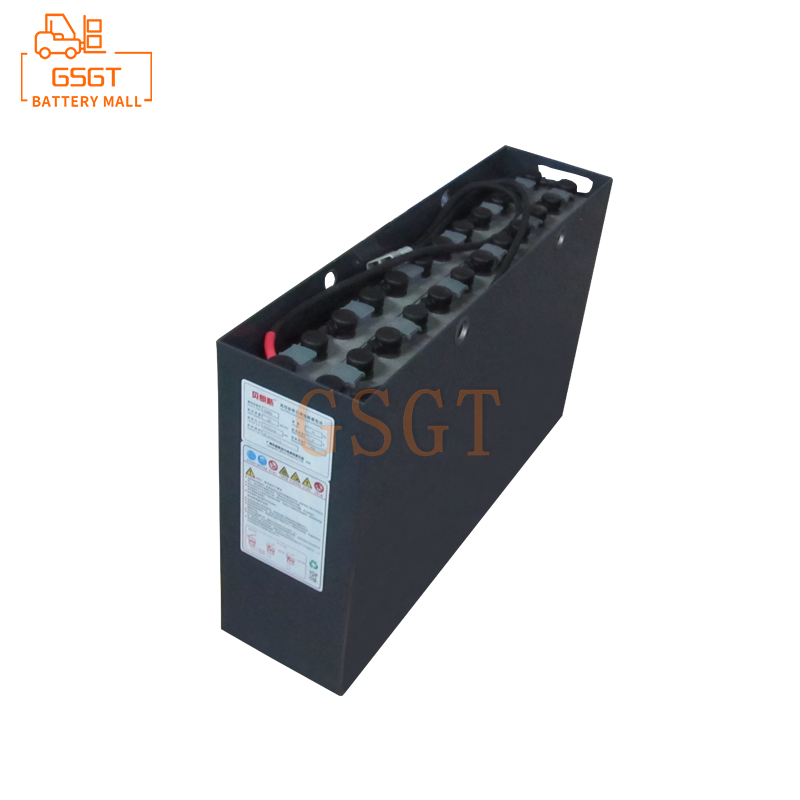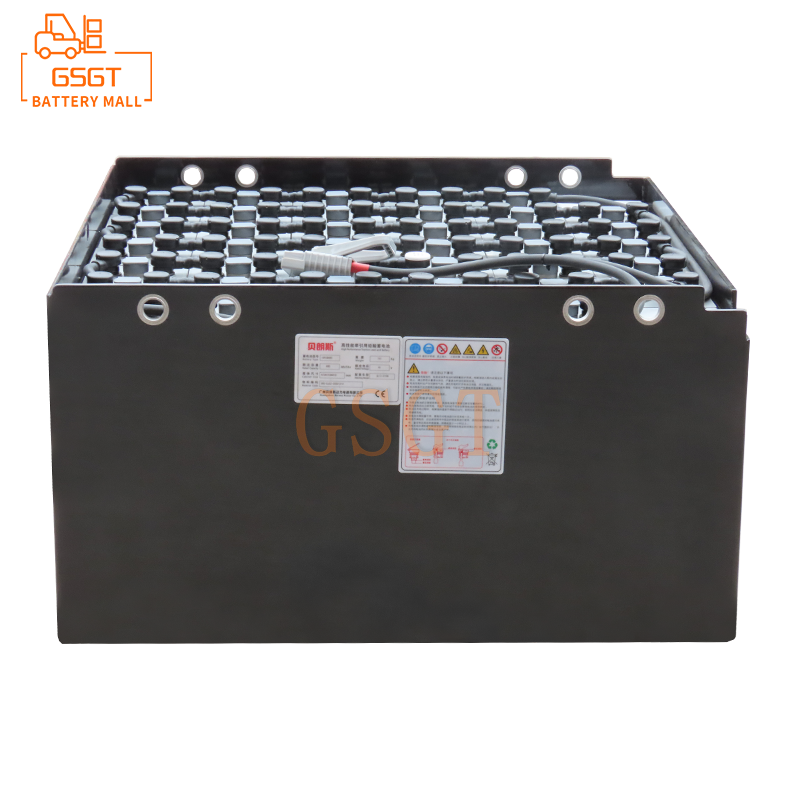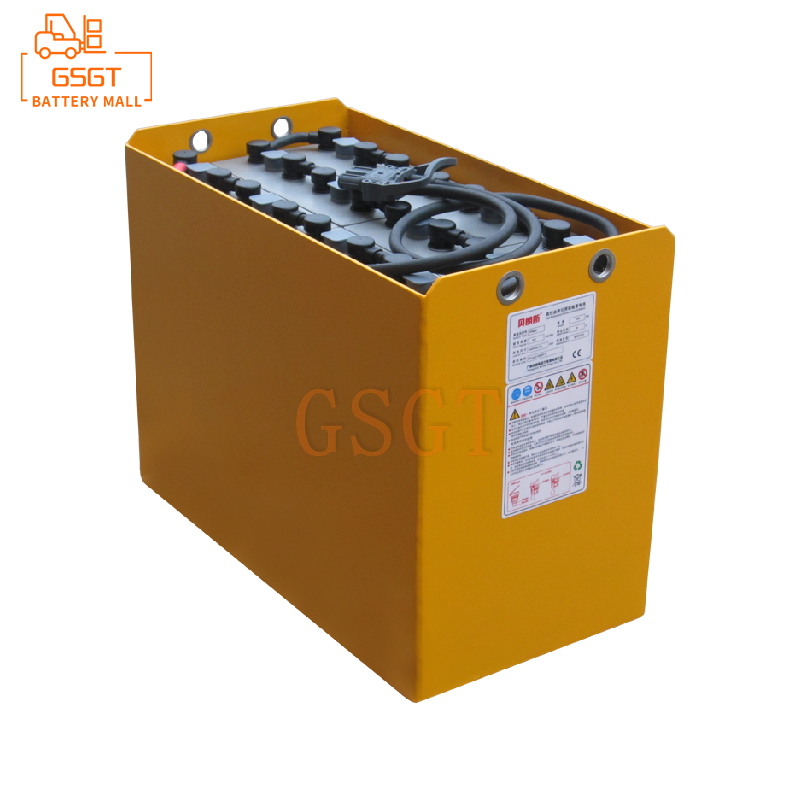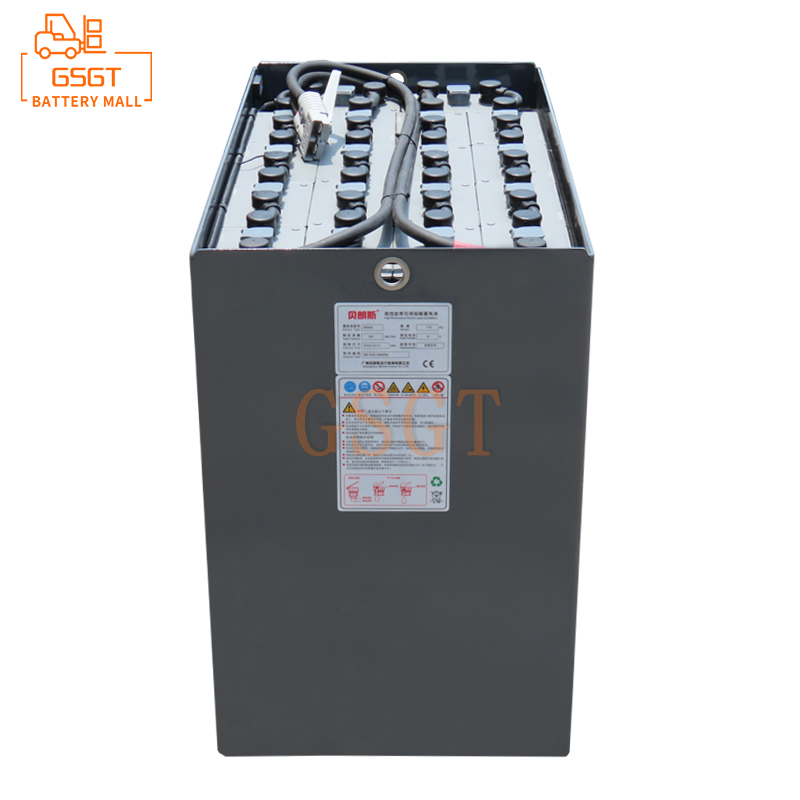Time:2025-06-10 10:00:35
Browse:587
In industrial production, forklifts, as important handling equipment, the stability of their operation directly affects production efficiency. Lead-acid batteries, as a common power source for forklifts, once they fail to charge, the forklifts will break down, causing many inconveniences and economic losses to enterprises. Therefore, quickly locating the problem of forklift lead-acid batteries not being able to charge and solving it in a timely manner is of vital importance for ensuring the smooth progress of production. This article will provide a detailed introduction to the common reasons why lead-acid batteries in forklifts fail to charge and the methods for quickly locating the problems.
Problems with charging equipment
Charger malfunction
Internal component damage: During long-term use, the electronic components inside the charger, such as diodes, capacitors, resistors, etc., may be damaged due to overheating, overvoltage and other reasons. For example, the breakdown of a diode can cause a short circuit in the circuit and prevent the normal output of the charging voltage. The aging of capacitors may cause unstable output voltage and affect the charging effect. At this point, the charger may experience phenomena such as the indicator light not lighting up or abnormal output voltage. The output voltage and current of the charger can be detected by using tools such as a multimeter and compared with the nominal parameters of the charger. If the output voltage is much lower than the nominal value or there is no voltage output, it is very likely that the internal components of the charger are damaged. Professional maintenance personnel are needed to inspect and repair or replace the charger with a new one.
Connection issues: There may be open circuits, short circuits or poor contact in the input power line or output charging line of the charger. For instance, loose plugs or damaged outer sheaths of wires can cause internal wire breakage, etc. If the input power cord is open-circuited, the charger cannot obtain mains power and naturally cannot work. If the output charging cable has poor contact, the charging current will not be able to be stably transmitted to the battery. Carefully inspect the power cord and charging cable of the charger to see if there are any damaged or broken areas. For the plug part, make sure it is inserted tightly and there are no signs of looseness. You can try plugging and unplugging the plug again, or replace it with a power cord or charging cable of the same specification for the test. If it can be charged normally after replacement, it indicates that there is a problem with the original circuit.
Charger setting error: Some chargers have adjustable charging parameters, such as charging voltage and current. If the operator mistakenly sets these parameters, causing them to not match the specifications of the forklift's lead-acid battery, it will result in the battery not being charged. Check the charger's manual to confirm the correct charging parameter Settings. Then check the current Settings of the charger and adjust them to the parameters that match the battery specifications. Forklift lead-acid batteries of different specifications have different rated voltages, capacities and other parameters, and the corresponding charging parameters also vary. It is essential to set them strictly in accordance with the requirements.
Problems of the battery itself
Plate vulcanization
The causes of formation: Long-term insufficient charging, prolonged idleness of the battery, excessively high or low density of the electrolyte, and other reasons may all lead to sulfation of the plates. When the battery is undercharged, the lead sulfate on the plates cannot be completely converted into lead dioxide and lead. Over time, the lead sulfate will crystallize on the plates, forming large white lead sulfate grains, which is the sulfation phenomenon. These grains will clog the pores of the plates, increase the internal resistance, hinder the penetration of the electrolyte, make it difficult for the current to pass through, and thus cause the battery to fail to charge.
Detection method: Determine whether the plates are sulfated by measuring the terminal voltage changes of the battery during charging and discharging. During charging, if the battery voltage rises particularly rapidly, with the voltage of some individual cells exceeding the normal value by a large extent, while during discharging, the voltage drops particularly fast, and the battery has very little or no stored power, it can basically be determined that the battery has undergone irreversible sulfation. In addition, the condition of the electrolyte can also be observed. For batteries with severe sulfation, the electrolyte may become cloudy and dark in color.
Treatment measures: For slightly sulfated batteries, the method of long-term charging with a small current can be adopted for repair. First, pour out all the electrolyte, add distilled water, and then charge it for a long time with a small current to dissolve lead sulfate. During the charging process, pay close attention to the temperature of the battery to avoid it getting too high. When the specific gravity of the electrolyte no longer increases within several hours, it indicates that the battery is fully charged. At this point, a discharge test can be conducted. If the sulfation is relatively severe, it may be necessary to use specialized battery repair equipment, such as a pulse repair instrument, which outputs a pulse current of a specific frequency to break the lead sulfate crystals and restore the activity of the plates. However, for severely sulfurized batteries that cannot be repaired, only new ones can be replaced.
Internal short circuit
The cause of short circuit: The reasons for the internal short circuit of the battery are rather complex. It might be that the separator is damaged, causing the positive and negative plates to come into direct contact. It could also be that the active substances on the plates fall off and accumulate at the bottom, causing a short circuit between the positive and negative plates through the deposits. It is also possible that metal impurities have been mixed into the electrolyte, and these impurities form conductive paths between the plates, causing short circuits.
Detection method: The resistance between the positive and negative terminals of the battery can be measured using the resistance range of a multimeter. Under normal circumstances, the internal resistance of a battery is relatively small. If the measured value is close to zero or significantly lower than the normal range, it indicates that there may be an internal short circuit. In addition, the performance of the battery during the charging process can also be observed. If the battery heats up severely during charging, and the voltage rises slowly or hardly at all, along with an abnormal increase in the temperature of the electrolyte, it may also be a sign of an internal short circuit.
Handling measures: Once an internal short circuit in the battery is confirmed, it is usually necessary to replace the battery with a new one. Because the repair of internal short circuits is rather difficult, and the performance of the repaired battery is often hard to return to the normal level. When replacing the battery, choose a product with the same specifications as the original battery to ensure the normal operation of the forklift. At the same time, it is necessary to pay attention to checking the quality of the electrolyte and avoid using electrolyte containing impurities to prevent the recurrence of internal short circuit problems.
The active material of the plates has fallen off
The reasons for the shedding: Frequent high-current charging and discharging, overcharging and overdischarging, drying up of the electrolyte, and severe vibration of the battery, etc., may all lead to the shedding of the active material on the plates. High current charging and discharging will cause the active substances on the plates to be subjected to strong electrochemical shocks, accelerating their shedding. Overcharging and overdischarging can damage the structure of the plates, causing the active material to loosen. The drying up of the electrolyte will cause the plates to lose the wetting and protection of the electrolyte, accelerating the shedding of active substances. However, violent vibration may directly cause the active substance to fall off the plates.
Detection method: Open the battery casing and observe the surface of the plates. If a large amount of black or brown substances are found to have fallen off the surface of the plates and there is a considerable amount of sediment at the bottom of the battery, it can basically be determined that the active substances on the plates have fallen off. In addition, for batteries with severe shedding of active substances, their capacity will significantly decrease. During charging, the voltage rises rapidly but will soon reach a fully charged state. During discharging, the voltage drops rapidly, and the usage time is significantly shortened.
Treatment measures: For batteries with relatively mild shedding of active substances on the plates, attempts can be made to repair them by replacing the electrolyte or cleaning the plates. However, if the detachment is rather severe, the repair is of little significance. It is recommended to replace the battery with a new one. In daily use, it is necessary to pay attention to the rational use of forklifts, avoid frequent high-current charging and discharging, strictly control the charging time and quantity, prevent overcharging and overdischarging, and at the same time, regularly check the liquid level of the electrolyte and replenish distilled water in time to avoid the electrolyte drying up. In addition, when handling and using forklifts, it is necessary to avoid subjecting the battery to severe vibration as much as possible.
Battery aging
Aging manifestations: As the usage time increases, the chemical substances inside the battery will gradually change, the activity of the plates will gradually decrease, and the performance of the electrolyte will also decline, resulting in a gradual reduction in the battery's capacity, a slower charging speed, and even no charging at all. The appearance of an aged battery may show signs such as bulging and deformation, and the battery casing may become fragile and prone to cracking.
Detection method: It can be determined whether the battery is aging by measuring its capacity. Use a professional battery capacity tester to conduct a discharge test on the battery in accordance with the operating procedures and record its actual capacity. If the actual capacity is much lower than the nominal capacity of the battery and there is no significant recovery in capacity after multiple charge and discharge cycles, it indicates that the battery has aged. In addition, the service life of the battery can also be observed. Generally speaking, the normal service life of a forklift lead-acid battery is about 2 to 5 years. If the service life exceeds this range and problems such as inability to charge occur, it is very likely caused by battery aging.
Treatment measures: For severely aged batteries, replacing them with new ones is the most effective solution. When choosing a new battery, factors such as the usage frequency and working environment of the forklift should be taken into account, and a product with reliable quality and stable performance should be selected. At the same time, it is necessary to pay attention to the correct installation and use of new batteries, and charge them in accordance with the prescribed charging methods and charging times to extend the service life of the batteries.
Connection line problem
Charging line failure
Open circuit: During long-term use, the charging circuit may break due to wear, pulling, corrosion and other reasons, resulting in an open circuit. For instance, during the operation of a forklift, the charging circuit may rub against other components, causing the outer skin to be damaged and the internal wires to gradually break. At this point, the current output by the charger cannot be transmitted to the battery through the circuit, thus causing the battery to fail to charge. Carefully inspect the outer sheath of the charging circuit for any damaged or cracked areas. For suspected open circuit parts, you can use the resistance range of a multimeter for measurement. Connect the test leads of a multimeter to both ends of the circuit respectively. If the resistance value shows infinity, it indicates that there is an open circuit in the circuit and the damaged section needs to be replaced.
Circuit short circuit: A circuit short circuit is usually caused by the damage of the outer sheath of the wire, resulting in the direct contact of the metal parts of two or more wires, and the current forms a circuit directly without passing through the load. A short circuit can cause a sharp increase in the charging current, which may trigger the protective device of the charger to act and stop charging. In addition, short circuits may also cause the lines to heat up and even lead to fires. When inspecting the charging circuit, pay attention to observing whether there are any intertwined wires or grounding situations. If you notice a burnt smell or obvious heating in the circuit, it is very likely that a short circuit has occurred. For short-circuited lines, it is necessary to identify the short-circuit point, repair the damaged outer sheath of the wire, and replace the entire section of the line if necessary.
Poor contact: At the connection plugs, sockets and various terminal blocks of the charging circuit, poor contact is prone to occur due to reasons such as loosening, oxidation and corrosion. Poor contact will increase resistance, impede current transmission, lead to a decrease in charging voltage and unstable charging current, thereby affecting the charging effect of the battery. You can gently shake each connection part of the charging circuit with your hand to observe whether the indicator light of the charger flickers or changes. At the same time, check if there are any signs of oxidation or corrosion on the connecting plugs and sockets. If so, you can clean them with sandpaper or a special cleaner, and then reinsert the connection parts tightly to ensure good contact.
Battery pack connection issue
Loose or corroded connection plates: The lead-acid batteries of forklifts are usually composed of multiple individual batteries connected in series to form a battery pack. Individual batteries are connected through connecting plates. If the connecting plates are loose or corroded, the connection resistance will increase, affecting the current transmission between battery packs and causing the entire battery pack to fail to charge or be undercharged. To check if the connecting piece is tight, you can use a wrench or other tools to gently turn the nut of the connecting piece to see if there is any loosening. For corroded connection plates, there will be white or green corrosion on the surface. You can use sandpaper to remove the corrosion, then apply an appropriate amount of Vaseline or conductive paste to prevent further corrosion, and finally retighten the connection plate.
Reverse polarity connection: When installing or maintaining a battery pack, if the polarity of a single battery is accidentally reversed, it will cause the total voltage of the battery pack to drop, and even lead to voltage cancellation, resulting in the inability to charge. Moreover, reversing the polarity may also cause damage to the charger and the battery. Carefully check the connection polarity of the battery pack to ensure that the positive and negative terminals of each individual battery are connected correctly. The total voltage of the battery pack can be measured using the DC voltage range of a multimeter. If the voltage value is negative or significantly lower than the normal range, it is very likely that the polarity is reversed and needs to be corrected in time.
Other factors
Electrolyte problem
Electrolyte drying up: During the use of lead-acid batteries in forklifts, the moisture in the electrolyte will gradually evaporate due to the electrolytic reaction during charging and high-temperature environments, etc. If distilled water is not replenished for a long time, the electrolyte will dry up, exposing the plates to the air, accelerating the sulfation and damage of the plates, and making the battery unable to be charged. Open the liquid injection hole of the battery and observe the liquid level of the electrolyte. Under normal circumstances, the electrolyte level should be about 10 to 15 millimeters above the plates. If the liquid level is significantly lower than this range, it indicates that the electrolyte has dried up and pure distilled water needs to be added. Note that tap water or water containing impurities must not be added to avoid affecting the performance of the battery. After adding distilled water, proper charging should be carried out to ensure the electrolyte is well mixed.
Abnormal electrolyte density: The density of the electrolyte has a significant impact on the performance of the storage battery. If the density of the electrolyte is too high, it will accelerate the corrosion of the plates and reduce the lifespan of the battery. If the density is too low, it will cause the capacity of the battery to decrease and make charging difficult. Abnormal electrolyte density may be due to adding too much or too little distilled water when replenishing it, or there may be a fault inside the battery. The density of the electrolyte is measured using a hydrometer. The standard density of the electrolyte varies for different types of forklift lead-acid batteries, generally ranging from 1.24 to 1.30 grams per cubic centimeter. If the measured values deviate significantly from the standard range, adjustments are required. If the density is too high, an appropriate amount of distilled water can be added for dilution. If the density is too low, an electrolyte with a higher density needs to be added for adjustment. After adjustment, the density should be measured again to ensure it meets the standard.
The influence of environmental temperature
Low temperature: The performance of lead-acid batteries is highly sensitive to the ambient temperature. When the ambient temperature is too low, the viscosity of the electrolyte increases, the diffusion rate of ions slows down, and the internal resistance of the battery increases, resulting in a decrease in the charging acceptance capacity and making charging difficult. In the cold winter, after a forklift is parked outdoors for a period of time, the battery may fail to charge. The forklift can be moved to a warmer indoor environment to allow the battery temperature to rise before charging. Enterprises with the necessary conditions can equip forklifts with heating devices, such as heating pads, to preheat the batteries before charging, thereby enhancing the charging efficiency. In addition, the charging current can be appropriately reduced and the charging time extended to prevent uneven heating of the battery due to high current charging and damage to the battery.
Excessively high temperature: An excessively high ambient temperature can also have an adverse effect on battery charging. High temperatures will accelerate the evaporation rate of the electrolyte, speed up the corrosion of the plates, and may also cause the chemical reactions inside the battery to get out of control, resulting in overcharging and damaging the battery. When the ambient temperature exceeds 35℃, it is necessary to enhance ventilation and heat dissipation to prevent forklifts from being parked for a long time under direct sunlight. Air conditioners or fans and other cooling equipment can be installed in the charging area to keep the temperature of the charging environment within an appropriate range. For batteries that have already shown signs of overheating, charging should be stopped immediately. After they cool down, inspection and handling can be carried out.
To sum up, the reasons why forklift lead-acid batteries fail to charge are multi-faceted, involving multiple factors such as charging equipment, the batteries themselves, connection lines, and the environment. In practical work, when encountering the problem of a battery not being able to charge, it is necessary to carefully investigate all possible causes in a certain order, quickly locate the problem, and take corresponding solutions. Only in this way can the normal operation of forklifts be restored in a timely manner and the smooth progress of production be guaranteed.

$1060

$5710

$1690

$1630

MESSAGE
Professional And Efficient
Security
Affordable Price
Professional Services